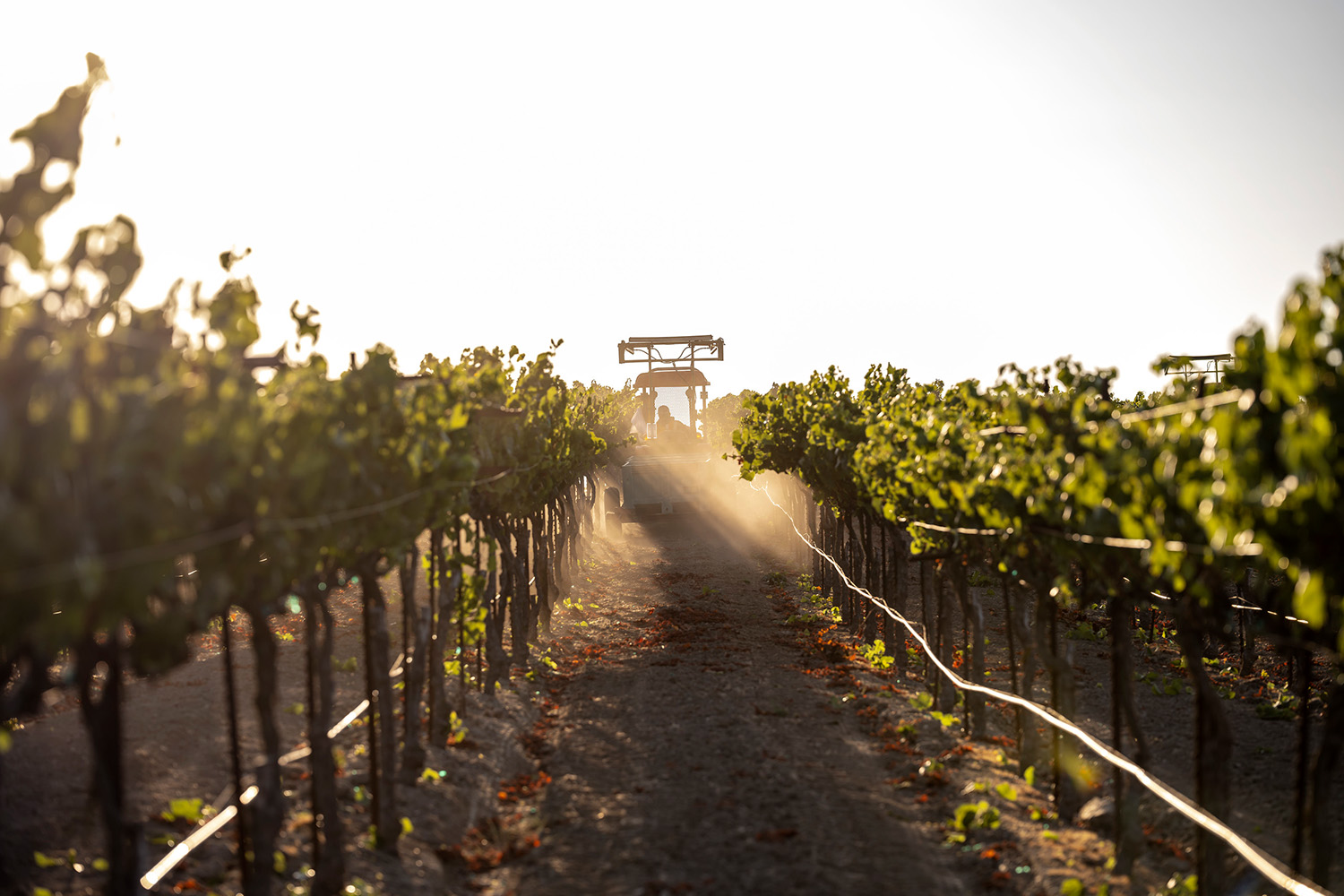Fall is the most incredible time of year in the Napa Valley as the build up of the entire growing season finally comes to a close. While harvest signifies the end of the growing season, it is the start of the winemaking process. Our winemaking team will spend the next nine to eleven months nurturing our chardonnay in tank and in barrel before it is bottled next summer.

Ripening & Sampling
After veraison occurs, full ripening happens approximately 60 days later. During this time, Frank Family Winemaker Todd Graff is regularly in the vineyard checking on the progress of the grapes. Determining the ideal time to harvest is probably one of the most important and challenging viticultural decisions our winemaker has to make each year. To help evaluate grape maturity and optimal picking time, Todd samples fruit from various vineyard blocks almost daily leading up to harvest so he can closely monitor how the sugar and acid content is progressing.

The Final Stage: Harvest
This year, Chardonnay harvest at Lewis Vineyard began at daybreak on August 18 for our sparkling wines. Harvest for our Carneros Chardonnay and Lewis Vineyard Chardonnay continued throughout the month of September, harvesting different blocks as they reached ideal ripeness. The grapes are picked at night and in the early hours of the morning to ensure they remain at cool temperatures when they arrive at the winery for crush. This gives our winemaking team better control during the fermentation process as cooler temperatures keep sugar composition levels more stable.

Entering Dormancy
After harvest, the vines begin to slow down as they enter their winter dormancy period. During this process, the leaves on the vines will gradually turn from green to gold before eventually falling off. Throughout this period, the process of photosynthesis continues, but rather than transporting carbohydrates to the grape clusters and leaves, the nutrients are stored in the root system and the trunk in preparation for the next season. When enough nutrients have been stored, the chlorophyll in the leaves begin to break down causing the leaves to turn yellow. This is the sign that the lifecycle of the vine is ending. In early spring, the lifecycle will begin again.







